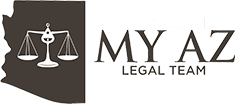An Introduction to Arizona Bankruptcy Court
 Whenever you find yourself in front of the judicial system, it often times is never a happy experience. This is no more true than in bankruptcy court. This blog post will offer a brief overview of the Arizona bankruptcy court system.
Whenever you find yourself in front of the judicial system, it often times is never a happy experience. This is no more true than in bankruptcy court. This blog post will offer a brief overview of the Arizona bankruptcy court system.
For the federal bankruptcy system in Arizona, there are a number of locations where bankruptcy cases take place. Phoenix, Tucson, Yuma, Flagstaff, and Bullhead City are the district bankruptcy locations in Arizona. Not however that Yuma is a hearing and in-person filing location, while Flagstaff and Bullhead City are only hearing locations.
Bankruptcy court is controlled by federal law and regulations. Bankruptcy cases are unique in that they cannot be filed in state court. Bankruptcy laws can be an outlet for business and individuals who are in trouble. However, it is something that no business or person should take lightly. Bankruptcy can provide organization to distribution of assets and property to creditors.
The purpose of bankruptcy is to give a forthcoming debtor a new start by resolving most debts. It also is a uniform way to repay creditors.
How Do you Start a Bankruptcy Case?
Bankruptcy cases start by a debtor filing a petition in court. A petition can be filed by an individual, or by a couple like husband and wife, or corporation or any other business entity. A debtor is responsible to provide an honest listing of assets, income, liabilities and names of creditors. A debtor will have to itemize each amount own to each creditor.
By filing a bankruptcy petition, the petition will stay any debt collection action by creditors against the debtor’s property. As long as the stay remains in effect, creditors cannot bring or continue lawsuits, make garnishments, or make telephone calls demanding payment. This can be extremely helpful to the debtor to get their affairs in order without the constant threat from creditors demanding payment.
Bankruptcy cases can vary in their purpose. At times, the best move is to allow the debtor to reorganize their assets, income, and other property and plan how to repay creditors. Other times, the best case is to liquidate the debtor’s assets and property to repay creditors. When liquidation happens, this usually means there is little to no money left in the debtor’s estate. Liquidation also means little argument over assets and any outstanding debts are usually discharged.
Bankruptcy cases are not without disputes. If there are major disputes in bankruptcy court that cannot be settled, litigation will occur. The disputes can be over who is owed certain property, how it should be used, what the property is worth, how much is owed, and whether the debtor should be discharged. These disputes can be long and drawn out, especially if there are multiple creditors and large amounts of money used. Litigation in bankruptcy court is the same in civil cases in normal district court. This means discovery procedure, pretrial motions, settlement offers, and if needed, a trial.
Can You File Bankruptcy on Your Own?
You may file on your own, without an attorney in bankruptcy court. The Arizona bankruptcy website provides information on how to file without an attorney. They describe the different regulations and laws that pertain to bankruptcy cases and videos on bankruptcy basics.
The District of Arizona Bankruptcy Court also has local rules. These local rules can control how proceedings can be filed, timelines, and other procedures. If a person is filing without an attorney, it is extremely advantageous to take a look at the local rules to understand any unique obligations that Arizona imposes.
Bankruptcy court can be a difficult and trying time, but for many debtors the advantages of going through the bankruptcy process can be extremely helpful to handle debts and provide an organized method of payment to creditors.
Click here for information on multiple bankruptcy filings in Arizona.

